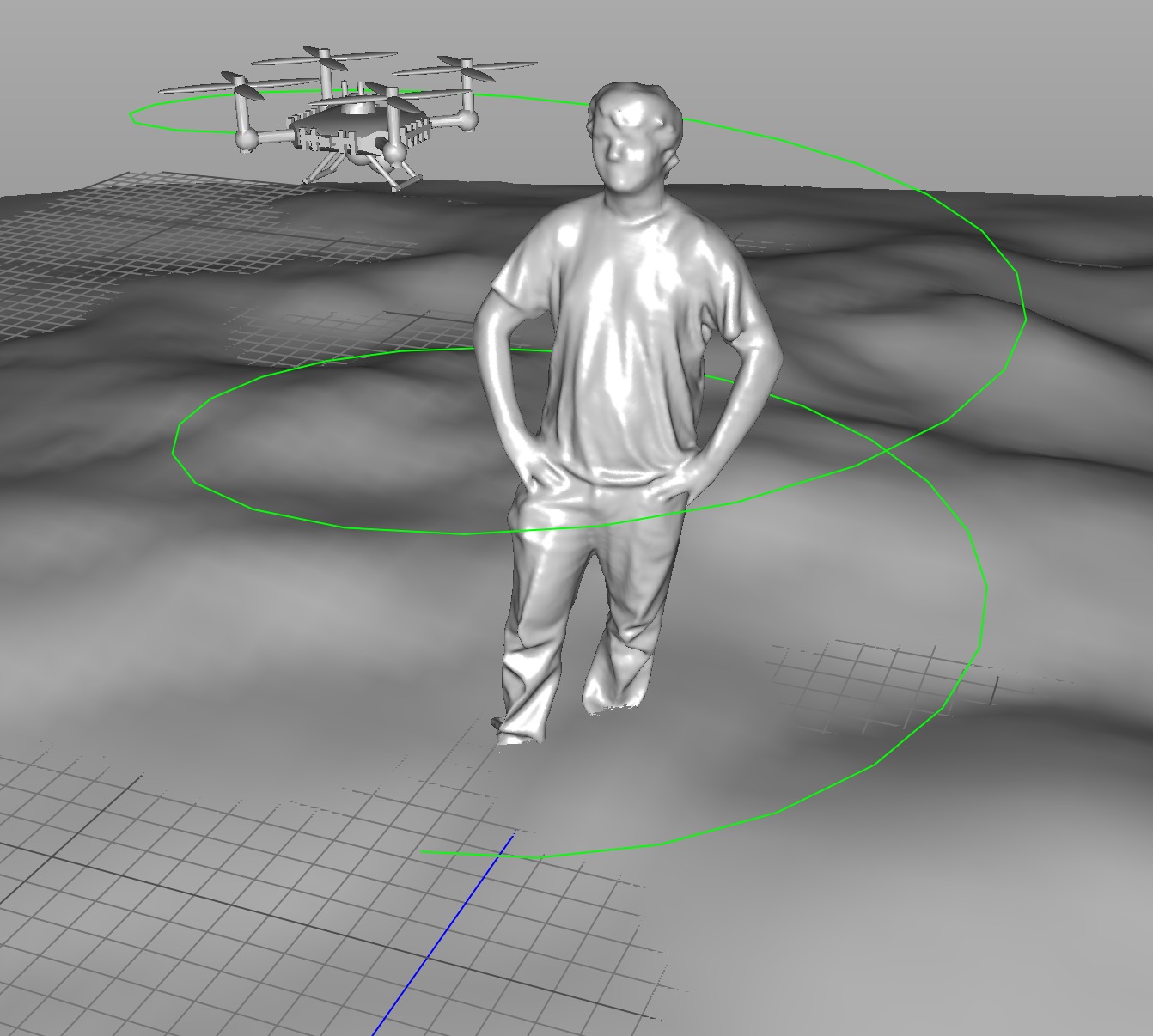
Just a possibly crazy idea, but why couldn’t we perform high resolution scans of humans using drones?
3D scanning of humans is increasingly popular, as it seems people like to have figurines of themselves or their loved ones. This wasn’t really possible in the past, but with the availability of inexpensive 3D printing technology, that latent demand has been addressed.
However, before you can 3D print a person you must capture their shape in a 3D model, typically with a 3D scanning process.
I’ve seen a number of approaches to this problem, ranging from relatively poor 3D scans made by Kinect-style devices, to incredibly expensive simultaneous photogrammetry setups.
The high-end (and expensive) approach these days takes one of two forms:
The subject is surrounded in a light-controlled chamber loaded with possibly dozens of still image cameras facing all portions of the human. Once the subject is set, the cameras fire simultaneously to capture a view from all directions. These images are then processed using photogrammetry software to develop a high-quality 3D representation. This approach, while yielding great results, is expensive due to the number of cameras and amount of processing required. Often such chambers are custom built.
An increasingly popular method of body scanning is a purpose-built scanning chamber that involves fewer cameras, usually situated in the corners at top, middle and bottom. These image the subject simultaneously, as above, but require fewer images. Processing is faster, but results are not quite as high quality. A variation on this is to slide the camera vertically along the corners to reduce the number of cameras required, but it also requires the subject to remain still much longer. These packaged solutions can cost in the USD$50,000-150,000 range.
But I’ve seen recently people using drones to image landscapes and buildings. They simply circle the outdoor structure in a set pattern and capture images in the same manner as above, just on a different scale. It’s a great idea and perhaps the least expensive way to capture a 3D model of a building, assuming there aren’t trees in the way.
But here’s my idea, if it hasn’t been done already: use a small drone with camera to circle a human subject and take images while doing so. This is essentially the same as the outdoor building scan, just on a much smaller scale.
Advantages are several:
- No worry about trees in the way of the camera, unless you place your subject very poorly.
- Vastly less expensive than packaged 3D body scanners.
- Possibly achievable by anyone with a camera-equipped drone and access to photogrammetry services.
There are some challenges, however:
- The subject would have to be completely still during the imaging sequence, but depending on the speed of the camera and drone movement speed, it might not be too long.
- Even lighting must be supplied on all sides of the subject to ensure equivalent image exposures. This might be done with supplemental lights or diffuse sunlight from a skylight, for example.
- A varied texture background must be provided to ensure the photogrammetry software can recognize shifts in drone position.
I can imagine someone developing a standard flight pattern that a drone could use for this sequence, or even software to quickly generate one based on the size of the subject. There could be sequences for high quality (slower, more images) or fast-capture (fewer images).
Maybe this could be an interesting 3D print startup idea, or perhaps a popular open source project.
Or maybe this is just another crazy idea.

